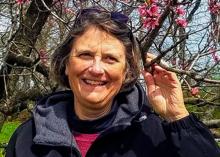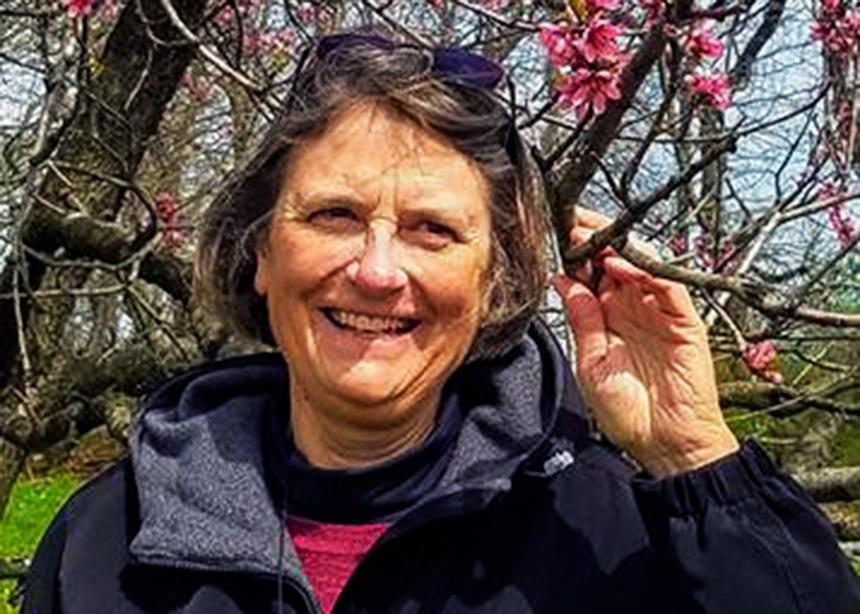How has COVID-19 affected you and your community?
SWS: The pandemic upended our world here, as it has for so many people. People no longer go to church and need to reinvent their jobs or find ways to make life work at home with new rhythms and the intensity of family. We’ve offered shelter to others. We had our son's family, with a newborn baby and a two-year-old, with us for seven weeks when things were closing down in New York. We've been able care for our other grandchildren so their parents can carry on with full-time work. There’s been profound grappling with the basics of life: How do you care for each other in hard times? How do you sustain life when everything is upended?
Have you gained insight into that?
SWS: I am finishing a book manuscript for MennoMedia. The title is Tongue-Tied: Learning the Lost Art of Talking about Faith. The entire project has taken on a different meaning and intensity because of the pandemic. During any crisis, fundamental questions about what larger story we’re a part of and who we are relative to God become exceedingly pertinent.
That very much relates to the question we’ve asked you to discuss in your plenaries for our conference. What's your reaction when you hear the question, "Why the church?"
SWS: It sounds like a question posed by people who have found the church unhelpful, too conventional, uninteresting, out of touch and inactive in response to the great dilemmas, problems and struggles of our time. I hear that question coming out of some great ambivalence about whether the church has anything to offer to the real world and the very hard times we find ourselves in.
What has caused that ambivalence?
SWS: Some church communities have been focused on their own internal dynamic, self-preservation and comfort. As humans who cluster in communities, we like to stay in control of our community and manage internal dynamics. That is a good impulse and it's also a self-defeating impulse. If we focus too much on maintaining control and serving our own self-interest, we lose touch with God's larger shalom vision for the healing of the world.
So that's your reaction, what is your initial response to the question, "Why the Church?"
SWS: There’s a natural social characteristic built into the fabric of our lives as human beings. We desire to be more than we can be by ourselves. There are all sorts of ways humans organize to do things together. Groups organize around a charismatic leader, an ideology like Marxism or progressivism, or as a social club. We organize as institutions and agencies to deliver goods to society.
The church organizes around God's shalom vision. We learn that vision from the Scriptures. We tell stories and rehearse that vision together. The particular calling of the church within the larger biblical shalom vision is to be the Body of Christ in the world. The church as a human association intentionally seeks to follow the “Jesus way” together, to become the hands, feet, mind and heart of Christ in the world.
We are a human association that organizes around what we believe is an alternative vision for the flourishing of all creation—the shalom vision of God.
You mention “an alternative vision.” I grew up under this idea that the church is an alternative vision that is against all of these other ways humans associate, that you've mentioned.
SWS: I was raised with much of the same idea, that there is the church and there is the world, and the church is separate from the world.
That way of framing things creates an artificial and misleading separation or divide between a noble, holy, righteous church and the horrible, fallen, broken world. We are all a part of this world, through and through, the world that God created and so loved. Those of us who choose to congregate as the church seek to align our lives with the vision of God for the world. We seek to intentionally shape our lives in ways that Jesus invited us to do.
God’s vision for the world is our orienting North Star. When we choose to seek to be the Body of Christ for the world, we discover that we need each other and the accountability that we receive from others to walk in step with that vision. We discover that we need to keep testing our decisions, our actions and our attitudes to see whether they align with that vision. Yet we are a part of the world.
We are broken as the world is broken. We are beautiful as the world is beautiful. We are loved as the world is loved. But we have set our sights on the North Star of God's shalom vision, most explicitly revealed in Jesus Christ. The church becomes the body that openly says, “This is our vision. This is where our primary loyalties and allegiance lie: to God’s shalom vision, to Jesus as Lord.”
For more information about "Table talk: Does the church still have legs," MC Canada’s 2020 virtual study conference, visit mennonitechurch.ca/tabletalk2020.
Related stories:
Embodying God’s mission with authenticity
MC Canada study conference goes virtual

Sara Wenger Shenk, president emerita of Anabaptist Mennonite Biblical Seminary, is one of four plenary speakers at Mennonite Church Canada’s virtual study conference, ‘Table talk: Does the church have legs?’ on Oct. 24. She will speak on the nature and identity of the church. (Photo by Gerald Shenk)



Add new comment
Canadian Mennonite invites comments and encourages constructive discussion about our content. Actual full names (first and last) are required. Comments are moderated and may be edited. They will not appear online until approved and will be posted during business hours. Some comments may be reproduced in print.